You're not the only one losing weight for beach season. The latest and least expensive breed of slimmed-down mobile PC--the mini-laptop--is ready for summer travel.
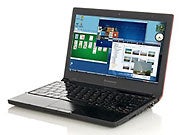 A new breed of extremely small and light (2 pounds or so) laptop has emerged just in time for summer travel. Called mobile Internet devices (MIDs), and also known as mini-laptops, mini-notebooks, or mini-notes, these lightweight laptops are practically naked, stripped of all extraneous features. And starting at around $400, they're far cheaper than other mobile PCs.
A new breed of extremely small and light (2 pounds or so) laptop has emerged just in time for summer travel. Called mobile Internet devices (MIDs), and also known as mini-laptops, mini-notebooks, or mini-notes, these lightweight laptops are practically naked, stripped of all extraneous features. And starting at around $400, they're far cheaper than other mobile PCs.There are other lightweight options, of course. One is the ultramobile PC (UMPC), which is roughly the same size as a mini-note, but has more features, a more ambitions design, and a much higher price. Another is the ultraportable laptop--once the smallest and lightest of all notebook types, with representatives such as the MacBook Air.
Mini-laptops aren't designed to compete with either UMPCs or ultraportables. When push comes to shove, a MID can handle Web browsing and document creation--but little else. These machines pack low-end processors and run Linux or Windows XP (or in some deplorable instances, resource-hogging Vista). But if your needs on the road are modest, a mini-laptop may be a good fit in your luggage.
Mini-Laptops, Mini-Prices
A quick survey of the summer stock of mini-laptops turns up several rivals for your affection, either on the market or in preview form.
To this point in the history of mini-laptops, the Asus Eee PC 4G has been the category's poster child. In fact, MID madness really took off when the $399 Eee PC 4G debuted late last year. Asus made it happen by jamming an 800-MHz CPU, 512MB of RAM, and a 7-inch screen into a pint-size laptop PC about the size of a paperback book; the unit weighs about 2 pounds, and its dimensions are 8.8 inches wide by 6.5 inches deep.
Its price and compactness are certainly appealing, but achieving them entailed making some significant compromises. Two, in particular, stand out: The Eee PC 4G has a keyboard too tiny to accommodate adult hands, and its hard drive is very small (4GB).
Subsequently, Asus released a version of the Eee PC 4G that runs on Windows XP; and most recently, it unveiled the slightly larger (and slightly pricier) Asus Eee PC 900 --a $549 unit that manages to increase the screen size from 7 inches to 8.9 inches while remaining almost as small overall as its predecessor.
The Eee PC 900 comes with a convenient multitouch touchpad, too. Finger combinations on the pad let you zoom out, magnify, or scroll through documents. If that sounds similar to the way a certain manilla-folder-size Apple notebook works, you know your way around an MacBook Air.
But Asus is far from alone in the potentially lucrative toyshop of Mobile Internet Devices.
Micro-Star International hopes that its MSI Wind will blow away the competition when it hits store shelves on June 16. Will it? The Wind improves on the Eee by building around Intel's new 1.6-GHz Atom CPU, including up to 2GB of RAM, stretching out with a 10-inch screen (at 1024-by-600-pixel resolution), and topping things off with an 80GB hard disk.
The Wind appears to be solidly constructed out of hard plastic--unlike some early mini-laptops, which feel about as sturdy as a Styrofoam mini-cooler. At 10 inches by 7 incches by 0.8 inch, the wind resembles some pricier portables--enough so that the list price of $399 (or $499 for the Windows XP version) seems like a bargain. Wait a week and we'll be able to tell you whether it's worth the money.
Meanwhile, the Acer Aspire One crams a lot into a very slim, very appealing package. It's smaller than the Wind (at 9.8 by 6.7 by 1.14 inches) and yet it finds room to house the same Intel Atom processor and a reasonably large 8.9-inch display (with a resolution of 1024 by 600 pixels).
The preview model that we looked at felt well polished. The Aspire One's plastic superstructure seemed a bit less rugged than the MSI Wind's, but this mini-laptop has a great keyboard.
The model we looked at is priced at $400; it comes with Linux preinstalled and packs an 8GB NAND flash drive. Pop in an SD memory card and you've got an instant memory upgrade. A $600 version of the Aspire One has Windows XP and an 80GB hard disk.
And let's not forget the Intel Classmate PC and the One Laptop Per Child program--two budget-friendly options contending for the low-cost education market.
The Future and the Growing Mini-Laptop
What's coming next? Well, even though the Wind hasn't even made its U.S. debut yet, MSI is already talking about its new and improved Wind for 2009. And if you're not in a hurry for a mini-laptop, keep your eyes peeled for more information on the Asus Eee PC 1000, which could show up in August. A couple of options (such as the choice of Windows XP or Linux) are upgradable, but we're looking forward to a bargain machine that comes with a 40GB solid-state drive, a 10-inch (or 10.2-inch) screen, up to 2GB of memory, an Intel Atom CPU, and 802.11n Wi-Fi (a WiMax version should also appear). Better still, this 2.9-pound portable comes with a six-cell battery and promises a 7-hour battery life.
On the horizon, five companies (Arm, nVidia, Qualcomm, Texas Instruments, and Via) are independently prepping new CPUs to compete against Intel's Atom for future MIDs. Depending on their success and on other marketplace variables, the small notebook category could develop into something similar to what the cell phone market is today, with an astonishing array of competing models emerging every year.
For a hint of the variety we may soon see, consider the high-style HP 2133--a mini-laptop that is extremely well suited for students and light business users. The well-spaced keyboard and bright, 8.9-inch screen indicate that the system's designer actually envisaged an adult using it without incurring terminal finger cramping or eye strain. And the 2133's rugged metal casing helps you avoid feeling like a kid whipping out some plastic toy. Nevertheless, this machine does have two problems: First, it uses Via's C7-M processor to run Vista (big mistake, but at least you can overcome it by buying an XP or Linux version of the device). Second, the price--between $500 and $750, depending on configuration--pushes this mini-laptop into the price range occupied by full-featured notebooks.
What to Look For in a Mini-Laptop
Operating System: One reason that low-end mini-laptops are so inexpensive is that they come equipped with Linux. You can find mini-notes that run Windows XP, but that OS usually tacks an extra $100 onto the price tag. Before buying anything, think about which programs you'll use on it. And if the machine you're considering tries to combine anything less than a full-fledged notebook's guts with Windows Vista, think twice and then move slowly away from the counter.
Hard Drive/Software: Mini-notes aren't powerhouse machines by any stretch of the imagination, and mopst of them have very limited hard-drive space. Need a productivity suite that'll fit inside? UseOpenOffice! It's free, it doesn't require much memory to run, and it's available for Linux, Windows, and Mac.
Keyboard: Because mini-laptops are so small, their keyboards may border on freakish. Remember, the same configuration that makes a great first computer for an elementary-school-age kid can become a medieval torture device when used by an adult to type a lengthy work proposal. If possible, visit a store and lay your hands on the device before you buy. For what it's worth, HP's 2133 mini-laptop currently has the biggest and best keyboard in its class.
Screen: Like the keyboard, the display gets scrunched on these wee PCs. The 7-inch screen on the original Asus Eee PC 4G is exceedingly small (with a resolution of 800 by 480 pixels), making the task of reading content on most Web pages a real challenge. Consider shooting for a slightly larger screen or one with 1024-by-768-pixel resolution so that you won't go blind trying to use it.
Extras: Some features are standard on today's mini-laptops. These include an SDHC/multiformat media slot, 802.11b/g, ethernet, two or three USB 2.0 ports, a built-in 1.3-megapixel camera, a built-in microphone, VGA-out, and microphone/headphone jacks.
The Supertiny UMPC
What's the main difference between an ultramobile PC (UMPC) and the MIDs we've been discussing? A couple hundred dollars. UMPCs get billed as higher-end, professional devices, but at bottom they're little more than sexy (and not very practical) gadgets. But if expensive toys are something you live for, you'll find that two good ones in the UNPC category are the HTC Shift and the Fujitsu U810.
The HTC Shift feels more like a supersize AT&T Tilt smart phone than like a fully functional computer. And yet it carries an 800-MHz Intel CPU and 1GB of RAM. The touch screen slides back and up at an angle to reveal a full keyboard for knocking around in Vista; the Shift also supports wireless data, so you can shoot off e-mail and text messages without loading Windows). That functionality sounds pretty sweet for someone who is always on the go--and the machine looks good, too, right down to a protective cover that wraps around the Shift like a leather burrito skin. All tha style provides some justification for the $1500 asking price.
Another hybrid of sorts isthe Fujitsu LifeBook U810. This UMPC measures 6.5 inches by 5 inches by 1 inch, so it can fit in just about any pocket. Heck, the U810 is just small enough for you to try holding it in both hands and thumb-typing as if it were a T-Mobile Sidekick in sumo training. If the keys still feel too tiny, flip the screen around and you also have a teensy tablet. But like a real sumo, it's no speed demon. Pricing for the U810 starts at $1000 and varies depending on the amount of RAM, the hard-disk size (the model we looked at came with 40GB), and whether it includes WWAN support. Though these Intel-based machines are expected to run Vista, you can opt for XP instead.
The Traditionalists: Ultraportable Laptops
Compared to a mini-laptop, the full-powered laptops known as thin-and-lights or ultraportables are behemoths, despite weighing less than 3 pounds. On the other hand ultraportables are hardly experimental devices: They have a long history as the notebook of choice for frequent travelers.
The most obvious current candidates for best in show in this class of notebooks arethe Apple MacBook Air and the Lenovo IdeaPad U110. Both of these premium laptops offer sweet and stylish takes on mobile computing and pack 1.6-GHz CPUs and plenty of RAM. But where's the optical drive? Like the mini-laptops and UMPCs we've discussed, these ultraportables had to sacrifice something to achieve the desired weight and screen size.
That's really the punchline for all of these machines. Each of them fills a different need for people who need to travel light, but they have yet to solve the problem of how to provide certain things that haven't gone out of style. For example, suppose that you want to install a program. Though USB flash drives continue to get cheaper, you'll still probably need an external optical drive nearby to handle big loads--and that means more gear to lug around. So much for shedding pounds.
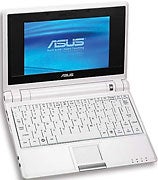
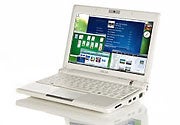
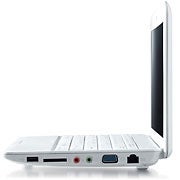
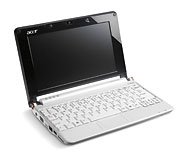
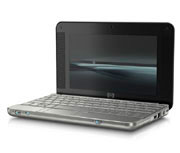
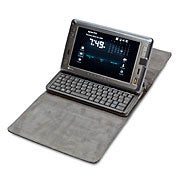
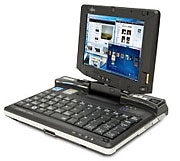
No comments:
Post a Comment